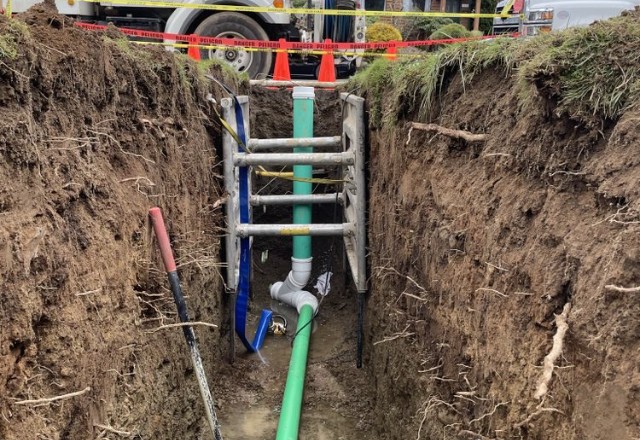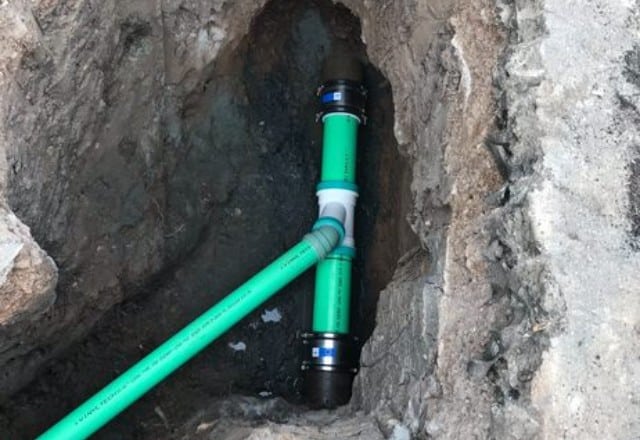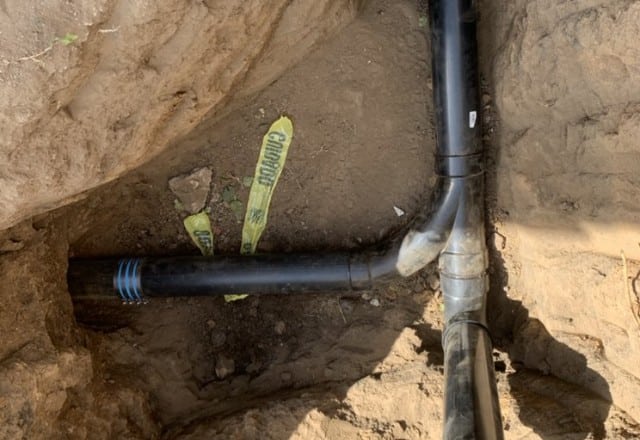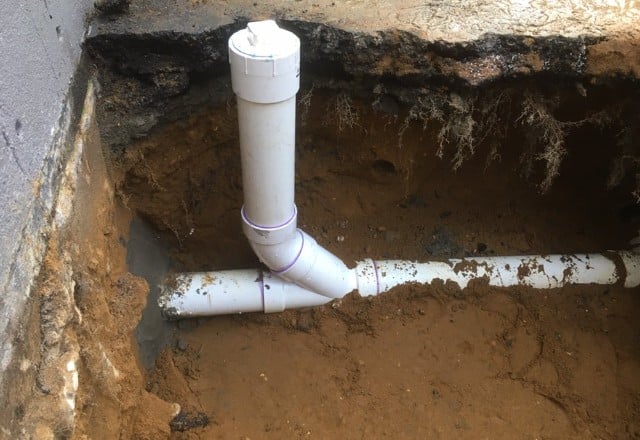
As a seasoned plumber, I’ve seen my fair share of main sewer line issues. When it comes to replacing this crucial component of your home’s plumbing system, it’s not a task to be taken lightly. Your main sewer line is the unsung hero of your home, silently carrying away waste and keeping your living space sanitary. When it fails, it can lead to some pretty unpleasant situations.
A sewer line is a critical component of your home’s plumbing system, responsible for carrying waste water away from your property and into the municipal sewer system or septic tank. When this essential infrastructure fails, it can lead to serious problems, such as sewage backups, foul odors, and damage to your home’s foundation. In this article, we’ll explore when sewer line replacement is necessary, the causes of sewer line damage, and the methods used to replace a failing sewer line.
The main sewer line in most homes is a large pipe, typically 4 to 6 inches in diameter for residential properties. From the cleanout or access point visible above ground, you’ll see a round pipe made of PVC (white or cream colored plastic), cast iron (dark and metallic), or clay (orangish-brown ceramic material) in older homes. The pipe interior is smooth to allow waste to flow easily, and it’s slightly sloped toward the street to use gravity for flow. Above ground, the most visible part is often the cleanout – a vertical pipe with a cap that rises a few inches above the soil, typically near the house foundation or in the yard.
The decision to replace a main sewer line usually comes after repeated issues with backups, slow drains, or when a camera inspection reveals severe damage. Common culprits include tree root intrusion, pipe corrosion, or shifting soil that’s caused the line to break or collapse. Several signs can indicate that your sewer line may need to be replaced:

Understanding the causes of sewer line damage can help you prevent future issues and determine when a sewer line replacement is needed:

Replacing a main sewer line is a significant undertaking. Traditionally, it involved extensive excavation – digging a trench from your house to the street, which could mean tearing up your yard, driveway, or even the street itself. However, modern techniques like trenchless sewer line replacement have made the process less invasive and disruptive.
Trenchless methods have gained popularity in recent years due to their less invasive nature and faster completion times. Two common trenchless techniques are:
With trenchless methods, we can often replace the line by digging just two access points instead of a long trench. We then use specialized equipment to pull a new pipe through the old one, effectively replacing it with minimal surface disruption. This method isn’t always possible, but when it is, it can save time, money, and your landscaping.
A typical residential sewer line replacement takes 1-3 days for most projects. However, the exact time depends on several key factors: the length of pipe being replaced (longer runs take more time), the depth of the line (deeper pipes require more extensive excavation), ground conditions (rocky soil or tree roots slow the process), and whether the work is done via traditional trenching or trenchless methods. Trenchless replacements like pipe bursting often complete in just 1-2 days, while traditional excavation methods generally take 2-3 days. The project might extend longer if there are complications like poor weather, utility conflicts, or permit delays.
A sewer line replacement typically costs between $3,000 to $25,000, with most homeowners paying around $5,000 to $15,000. This significant cost variation depends on several key factors.
The total cost largely depends on the length of pipe needing replacement, pipe depth, and chosen replacement method. Traditional trenching methods cost less initially but require more landscape restoration. Trenchless replacement methods cost more upfront but minimize property damage. Going through a concrete slab foundation adds $1,000 to $4,000 to the total cost due to necessary concrete cutting and restoration.
Getting an accurate estimate requires a professional inspection, as contractors need to assess pipe condition, depth, and site challenges. Most plumbing companies offer free or low-cost initial estimates. When comparing estimates, ensure they include permits, inspections, and restoration work.
Standard homeowner’s insurance typically doesn’t provide coverage for sewer line replacement, though some companies offer optional sewer line coverage as an add-on. Consider purchasing a separate sewer line warranty, which costs around $100-300 annually and can help offset future replacement costs.
Keep in mind that reputable contractors usually provide a warranty on their work, typically ranging from 5-10 years for parts and labor. When evaluating contractors, ask about their warranty terms and whether they handle permit applications as part of their service.
The main sewer line in residential properties typically runs from the house to the municipal sewer connection at the street or sidewalk, usually buried several feet below ground level, most commonly between 4 to 8 feet deep. It generally follows the most direct path possible, exiting from the lowest point of the house where multiple household drain pipes converge, which is often in the basement or crawl space.
The line’s location can often be identified by looking for a sewer cleanout pipe, which appears as a PVC pipe protruding from the ground near the house foundation. While the main line is frequently found near the front of the property, it sometimes runs through backyards depending on where the municipal connection point is located.
Several factors influence the exact placement of a main sewer line, including the age of the home, local building codes, climate considerations like frost line depth, property layout, municipal sewer system design, and the topography of the land. Given these variables, homeowners should always verify the specific location of their sewer line rather than making assumptions based on typical placement.
Residential sewer lines are typically buried 4 to 8 feet below ground level. The exact depth depends on factors like the local frost line, building codes, and the need for proper drainage slope (usually a quarter inch drop per foot). In colder regions, lines often run deeper to prevent freezing, while homes with basements may require depths of 10 feet or more to maintain proper gravity flow.
Main sewer lines typically last 50-100 years depending on their material and environmental conditions. Cast iron pipes from older homes often need replacement after 50-75 years, while modern PVC pipes can last over 100 years under ideal conditions.
However, various factors can necessitate earlier replacement. Tree root intrusion remains one of the leading causes of premature sewer line failure, particularly in older clay or concrete pipes. Soil conditions play a crucial role too – acidic soils can corrode metal pipes, while shifting soil can cause pipes to crack or separate at joints. Areas with frequent ground freezing and thawing typically see shorter pipe lifespans.
Warning signs that might indicate a need for replacement include frequent backups, slow drains throughout the house, sewage odors in the yard, unusually lush patches of grass over the line, or repeated needs for professional cleaning. Modern sewer camera inspections help plumbers assess whether repairs might suffice or if full replacement becomes necessary.
The pipe material also impacts longevity significantly. Traditional materials and their typical lifespans in residential settings include orangeburg (about 50 years), clay (50-60 years), cast iron (75-100 years), and PVC (100+ years). Many homes built before 1980 still have their original sewer lines, so they’re approaching or exceeding their expected service life.
One aspect that often surprises homeowners is the permitting process. Sewer line replacement usually requires permits from your local municipality, as it involves work that connects to the public sewer system. As professionals, we handle this paperwork to ensure everything is up to code. When faced with a sewer line replacement, it’s crucial to choose the right plumber for the job:
Cost is always a concern with such a major project. While it’s a significant investment, remember that a properly installed main sewer line can last 50-100 years. It’s not just a repair; it’s an investment in your home’s infrastructure and your family’s comfort and health.

The material choice for the new line is crucial. While older homes often have clay or cast iron pipes, modern replacements typically use PVC or HDPE (high-density polyethylene) pipes. These materials are durable, resist root intrusion, and can last for decades with proper care. After a sewer line replacement, it’s essential to take steps to maintain your new sewer line and prevent future issues:
After replacement, proper maintenance is key to ensuring the longevity of your new sewer line. Regular cleaning and inspections can catch small issues before they become big problems.
Remember, when it comes to main sewer line replacement, cutting corners isn’t an option. It’s a job that needs to be done right the first time. As your local plumbing expert, I’m here to guide you through the process, ensuring you get a durable, efficient sewer line that’ll serve your home for decades to come. Don’t let sewer line issues disrupt your life – address them head-on with professional help.
Sewer line replacement is a significant undertaking, but it’s crucial to address sewer line issues promptly to avoid more serious problems down the road. By understanding the signs that indicate a need for replacement, the causes of sewer line damage, and the available replacement methods, you can make an informed decision when the time comes. Remember to choose a reputable, experienced plumber and take steps to maintain your new sewer line to protect your home and plumbing system for years to come. If you suspect that your sewer line may need to be replaced, don’t hesitate to consult with a professional plumber to assess your situation and determine the best course of action.
Q: How long does a sewer line replacement typically take?
A: The duration of a sewer line replacement project depends on various factors, such as the method used (traditional trenching or trenchless), the length of the sewer line, and the extent of the damage. On average, a traditional sewer line replacement can take anywhere from 3 to 5 days, while trenchless methods like pipe bursting or CIPP can often be completed in 1 to 2 days. However, more complex projects may take longer. Your plumber should provide you with an estimated timeline before starting the sewer line replacement.
Q: Will my homeowner’s insurance cover the cost of a sewer line replacement?
A: In most cases, standard homeowner’s insurance policies do not cover sewer line replacements, as they are considered a maintenance issue. However, some policies may offer additional coverage for sewer line damage if it is caused by a covered peril, such as an earthquake or tree root damage. It’s best to review your specific policy and contact your insurance provider to determine if any portion of your sewer line replacement may be covered.
Q: Can I replace my sewer line myself, or do I need to hire a professional plumber?
A: While it may be tempting to attempt a sewer line replacement yourself to save money, it is highly recommended to hire a expert, licensed plumber for this complex and labor-intensive task. Sewer line replacement requires specialized knowledge, tools, and equipment to ensure the job is done correctly and in compliance with local building codes and regulations. Attempting a DIY sewer line replacement can lead to further damage, costly mistakes, and potential health hazards. Always trust a professional plumber with the experience and expertise necessary to handle your sewer line replacement project safely and effectively.
I bring over 9 years of dedicated plumbing experience to the table. As a seasoned professional in the plumbing industry, I've tackled a wide range of projects, from residential repairs to large-scale commercial installations.

